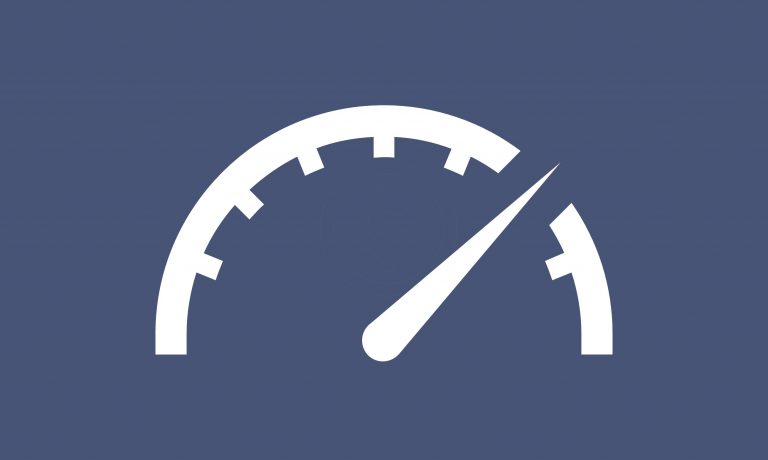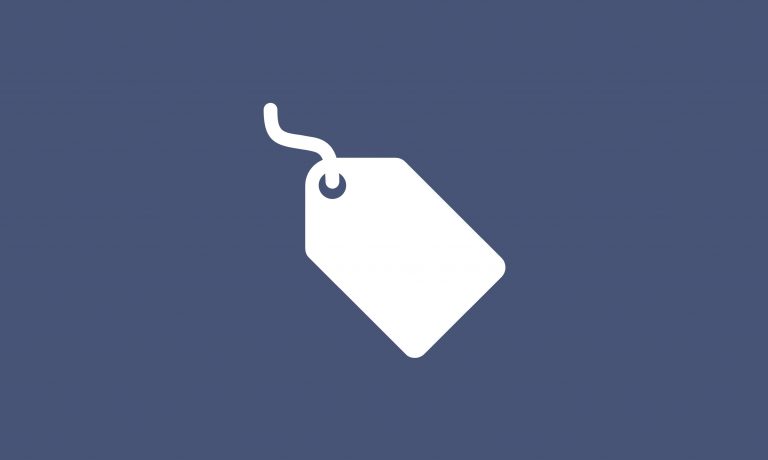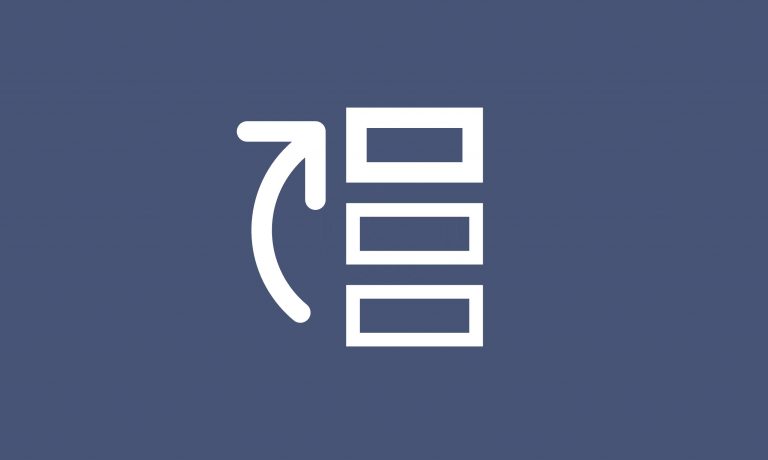Article written by Marcelo Krybus and published in the Journal of the Professional Pricing Society (PPS).
Top questions that need answers before starting a sales promotion campaign
Introduction
A study carried out by Nielsen indicates that approximately 2/3 of sales promotion do not bring positive results. According to the survey, it is better to keep the price without any discount to at least ensure the same result. Many companies allocate large amounts for TPR (Temporary Price Reduction) but end up without the expected return.
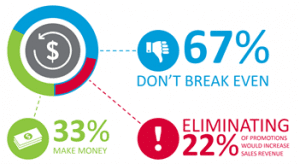
Nielsen Study on Promotions
In addition, a survey by Retail Week magazine showed that shoppers expect more sales promotions in the post-pandemic scenario. Before covid-19, 70% of respondents had a high/average expectation of waiting for promotions. In the post-pandemic scenario, this proportion jumps to 78%.
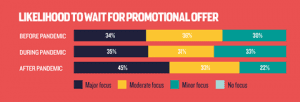
Retail Week Survey
The pandemic also brought about a change in consumer behavior. Many people reduced their consumption pattern and downgraded their preferred brand. According to a research by MindMiners in Brazil, 70% of people cut some type of spending after March 2020. So, what now? What should be considered when designing new sales promotions given the scenario described above? Many companies had an impact on sales volume and thought – or even executed – sales promotions campaigns to avoid losing Market-Share. This article aims to bring the best practices to help companies creating a guide to be taken into account in the design, execution and control of sales promotion actions. For that, you must be ready to answer the following questions:
Why? (Objectives)
Englishman Simon Sinek, motivational speaker and author of five books, says that everything should start with ‘why’. He inspires people and companies to discover their purpose, in order to achieve success and happiness. For sales promotions, it is not different. It is important to be clear about the objectives when carrying out a promotional campaign. This will help you to assess whether the sales promotion action was successful or not, as the objective is not necessarily to have a greater margin of contribution.
Some examples of goals that can be pursued with a sales promotion are:

It is essential to always have the objectives in mind to answer the questions below, and to be able to measure the results of the promotional campaign.
Who? (Public)
In this question, the target audience for the sales promotion should be defined. The maxim “using a sledgehammer to crack a nut” applies here. The more targeted and personalized your promotional campaign, the greater the expected return. Therefore, it is necessary to think about whether the sales promotion will target a specific region to combat a regional brand, a specific sales channel or a similar profile shopper segment.
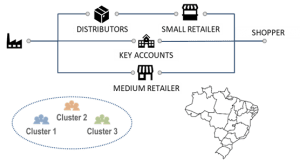
Personalized sales promotions are already a reality. At the present time, there are tools that make it possible to have sales promotions both in an e-commerce, with dynamic pricing, and in a physical retail with applications for retailers’ discount.
What? (Product/ Service)
For the definition of which products or services will be part of the promotional campaign, the company should have some information in hand, namely:
· Price Elasticity: It is important to measure the level of elasticity before the campaign as higher returns are expected for products with a higher level of elasticity. Inelastic products are not recommended for promotions as the return in sales tends to be unrepresentative.
- Category Management: It is essential to know the role of different categories in the retailer’s and shoppers’ eyes. Categories are divided into four groups:
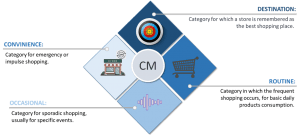
CM: Category Management
With that in mind, categories classified by retailers as ‘destination’ or ‘routine’, should be the ones with the highest incidence of price reduction. On the other hand, products classified as convenience should have a lower frequency in sales promotions.· Shopping Basket: Through this analysis, it is possible to avoid reducing the price of items with a high degree of association in sales. If two products are already historically sold together, would it be necessary to design promotional campaigns for both? Or, if you have just one of them in a sales promotion, would you already leverage the sales of both? This type of analysis can help not only better target the investment in sales promotion, but also the design of visual materials, planograms and product visibility in the e-commerce.
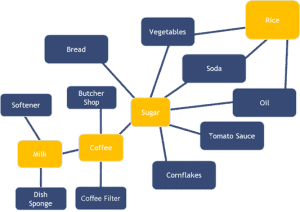
Example of Shopping Basket Analysis
- Inventory Level: Does the company have an inventory or the ability to deliver the anticipated number of incremental sales?
· Product Expiration Date: Products with close expiration dates are items that could have their price reduced to prevent their destruction and loss. It is important to emphasize to the shoppers that there will be no replacement of the product if the date expires, whether for retailers or industries.· Recent Sales Promotions: In the final part, this article will deal with indicators to measure the sales promotions results. This control is essential to assess the success or failure of any campaign, in addition to enabling the identification and repetition of successful cases.How? (Execution/Communication)
How a shopper will be impacted by a promotional campaign should be taken into account so that the best price reduction strategy can be defined.
Some possibilities are:

How Much? (Value)
Here, the benefit to be granted for shoppers must be evaluated. 20%, 30%, 40% discount? For this decision, some factors are relevant:· Sales Promotion Goal: What is the goal of the sales promotion? For example, if the goal is to urgently reduce inventory, keep in mind that a higher discount percentage may be required in this case.· Discount Optimization: Through the measured elasticity, it is possible to assess which discount percentage would least affect the absolute contribution margin. The cross-price elasticity can also be included in the model in order to have a more accurate estimate of the result.
- Competition: It is essential to have traceability of your competitors’ moves. In real-time, if possible.
- Recent Sales Promotions: Evaluate past hits and misses.
- Profitability: What is the availability of the investment in a promotional campaign, assuming that positive financial results will not be achieved in the short term?
In some price reductions, it is necessary to limit the number of units to be sold. Thus, it is possible to obtain greater control over the amount invested.
When? (Period/Frequency)
The promotional calendar provides, in advance, better visibility of when sales promotions should take place. This calendar should consider important events in the market as a whole (e.g.: Black Friday, Valentine’s Day and Easter), as well as specific events in your segment (e.g.: National Nut Day, Read a Book Day and National Dog Day).
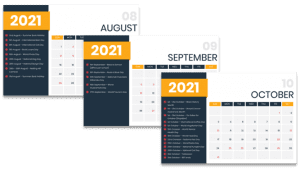
Besides the promotional calendar, you should measure the promotional campaigns of your main competitors to assess whether counteract actions are needed.
There are two ways to act in this scenario: 1) Reactively, that is, monitoring prices, and as soon as the competition reduces the price, your company acts in a similar way; and b) Proactively, through historical monitoring of competitors’ sales promotions. Thus, the month with the highest incidence of price reduction is evaluated, or, in more detail, the week of the month and the days of the week. Remember that, to avoid unnecessary price wars, this is recommended for companies that are not market leaders.Another relevant aspect is the sales promotion frequency. How often are promotional sales being executed? If a product is on “sale” all year, the shopper may feel cheated, since the “sale” is the regular price.
Where? (Ways of communicating)
In this question, Pricing/Revenue Management should have less interference so that the specialized areas make the most appropriate decisions. Some possibilities for communicating and marketing the promotion are:

Before implementation:
For a successful implementation, good communication among stakeholders is necessary, whether from the internal team (e.g., Marketing, Sales, Trade Marketing) to shoppers (e.g., banners, labels, etc.); or, from industries to the retailers. If there is any miscommunication, the sales promotion and the investment spent will most likely not bring the expected results.
It is also important to parameterize the system with the rules defined during the planning, such as discount levels per product, the maximum number of promotional products, dates for beginning and end, among other rules.
Did the promotion/campaign work?
The first question that arises after the sales promotion period ends whether the financial return was positive. But first, it is necessary to assess whether the campaign’s objective has been achieved. There is always a tendency to measure the financial return. However, you should first assess whether the stated goal has been achieved. We recommend having this indicator closely monitored.One of the indicators to measure the financial performance of a campaign is, as we call it at Quantiz, the analysis of isolated effects, with the objective to isolate most of the sales promotion effects. Starting from a contribution margin reference (which can be historical or projected), the following are added/deducted:
- Incremental Sales: How much incremental revenue occurred as a result of the increase in volume/quantity?
- Discount Effect: What is the effect of the price reduction on revenue?
- Variable Cost: How much more of the variable cost is incurred in the result due to the increase in quantity?
The next three indicators are more complex to calculate. However, only an estimate of them is enough:
- Experimentation: Is it desired that the shoppers buy for the first time and that a part of them make the purchase a recurrent action? How much additional revenue will this generate for the company in the future?
- Stocking: Is it observed in some campaigns that clients and shoppers stock up to take advantage of the price reduction? If so, what is the impact of this action on future sales with the regular prices?
- Cannibalization: Does the promotional action somehow cannibalize the sale of another product in the portfolio? If so, what is the impact of this change that the client or shopper is making?
- Marketing Costs: This indicator includes all expenses with the campaign, such as investment in media, promotional materials (Trade Marketing), among others.
Adding all the effects, it is possible to evaluate the financial performance of the promotional campaign. The share graphic below illustrates those effects:

To know the effectiveness of the sales promotion, it is important to also measure other indicators.
- Sales evolution: registered vs. targeted vs. budgeted
- Market-Share evolution
- Response or not from the competition
- Percentage of sales at the regular price vs. promotional price by category/product/region
- Quantity of shoppers
- Number of different products sold
- Promotional campaign elasticity vs. historical elasticity
- Shopping basket to assess changes in shopper behavior
- Frequency of promotional campaigns
Conclusion
Price reduction is a tool for companies to encourage the sale of their products. However, for a greater effectiveness of the promotional campaigns, it is necessary to dose the investment.
You should treat promotional campaigns sparingly. It is common to see companies doing recurrent promotional prices for the same product and the desired effect of the promotion does not work. Nowadays, the shopper is more rational and, therefore, marketing actions should be well planned to be successful.In addition, the regional characteristics should be evaluated when defining the sales promotion. For example, in some regions, a higher discount percentage generates more effect than in others, where a promotion with a product combo has a better performance. In the same way, companies with a multi-category portfolio should know that promotional actions can work differently in each category.Most companies, in order to maintain their results, are under pressure to increase their prices due to their increased costs. On the other hand, clients and shoppers are increasingly sensitive due to market uncertainties. Therefore, it is extremely important that Pricing processes are well established in the organization.
Although promotional campaigns are a Pricing department process, it should be treated in a multidisciplinary way, as the participation of other departments is essential for it to be more successful and gain the necessary dynamism.
Some of the decisions during the process should not be under Pricing’s responsibility, such as marketing. It is essential to understand that all departments should be aware of their individual roles and responsibilities despite being a multidisciplinary process.
References:
Nielsen: https://shorturl.at/isKUW
Retail Week: https://shorturl.at/dzCF8
MindMiners: https://bit.ly/2SgGx3f
